 Search by Keyword
Sign Up Below for our MONTHLY BEATLES TRIVIA QUIZ!
|
“WAIT”
(John Lennon – Paul McCartney)
 The Beatles fifth British album “Help!” was recorded within a period of just over four months, between the dates February 15th and June 17th, 1965. “When the sessions begin, my heart is usually in my mouth,” expressed George Martin about these 1965 sessions. “I wonder, sometimes, whether they can keep it up time after time, but they do! They’re terribly workmanlike in the studio. I don’t mean that they’re deadly serious and somber, I mean they’re always full of fun.” The Beatles fifth British album “Help!” was recorded within a period of just over four months, between the dates February 15th and June 17th, 1965. “When the sessions begin, my heart is usually in my mouth,” expressed George Martin about these 1965 sessions. “I wonder, sometimes, whether they can keep it up time after time, but they do! They’re terribly workmanlike in the studio. I don’t mean that they’re deadly serious and somber, I mean they’re always full of fun.”
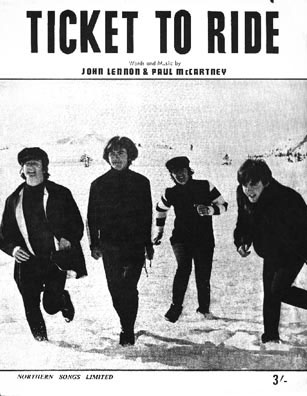 These fun sessions resulted in a total of eighteen songs, fourteen of which made it onto the resulting “Help!” album and included three blockbuster #1 singles on the US Billboard Hot 100, the title track, “Ticket To Ride” and “Yesterday.” While there weren’t many leftover songs in the vaults up to this point, the four remaining tracks recorded during these months were found not good enough to be placed on the album for one reason or another. These fun sessions resulted in a total of eighteen songs, fourteen of which made it onto the resulting “Help!” album and included three blockbuster #1 singles on the US Billboard Hot 100, the title track, “Ticket To Ride” and “Yesterday.” While there weren’t many leftover songs in the vaults up to this point, the four remaining tracks recorded during these months were found not good enough to be placed on the album for one reason or another.
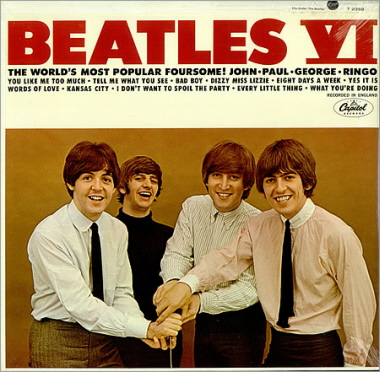 The Larry Williams cover song “Bad Boy” was one of these, although it was immediately released on an American album entitled “Beatles VI” and eventually found its way onto a British compilation album entitled “A Collection Of Beatles Oldies” in December of 1966. Two others, “That Means A Lot” and “If You’ve Got Trouble,” weren’t deemed suitable for release at all at that time, not officially seeing the light of day until the “Anthology 2” album of 1996. The Larry Williams cover song “Bad Boy” was one of these, although it was immediately released on an American album entitled “Beatles VI” and eventually found its way onto a British compilation album entitled “A Collection Of Beatles Oldies” in December of 1966. Two others, “That Means A Lot” and “If You’ve Got Trouble,” weren’t deemed suitable for release at all at that time, not officially seeing the light of day until the “Anthology 2” album of 1996.
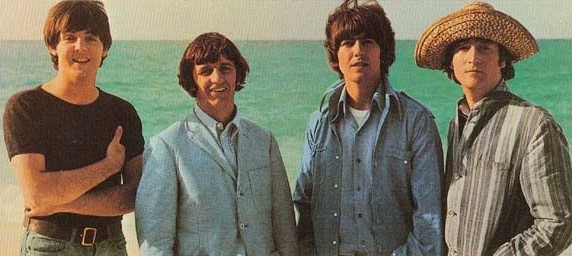 The fourth of these songs, though initially deemed unworthy of release, was the first to be pulled out, dusted off, and then improved upon when a fourteenth song was required for their next album “Rubber Soul.” This song, “Wait,” only had to wait four more months until it was unveiled on that album in December of 1965. Since it was viewed as fitting very snugly onto this album, no one at the time suspected that it was an album outtake from a few months earlier. And as most will agree, “Rubber Soul” wouldn’t be the same without it. The fourth of these songs, though initially deemed unworthy of release, was the first to be pulled out, dusted off, and then improved upon when a fourteenth song was required for their next album “Rubber Soul.” This song, “Wait,” only had to wait four more months until it was unveiled on that album in December of 1965. Since it was viewed as fitting very snugly onto this album, no one at the time suspected that it was an album outtake from a few months earlier. And as most will agree, “Rubber Soul” wouldn’t be the same without it.
 Balmoral Club, Nassau, Bahamas
|
Songwriting History
From February 23rd to March 9th of 1965, The Beatles were on their first location in New Providence, Bahamas for shooting their second movie “Help!” It was during this stay, as they took up residency in a luxurious house at Balmoral Club near Cable Beach, that the song “Wait” was written.
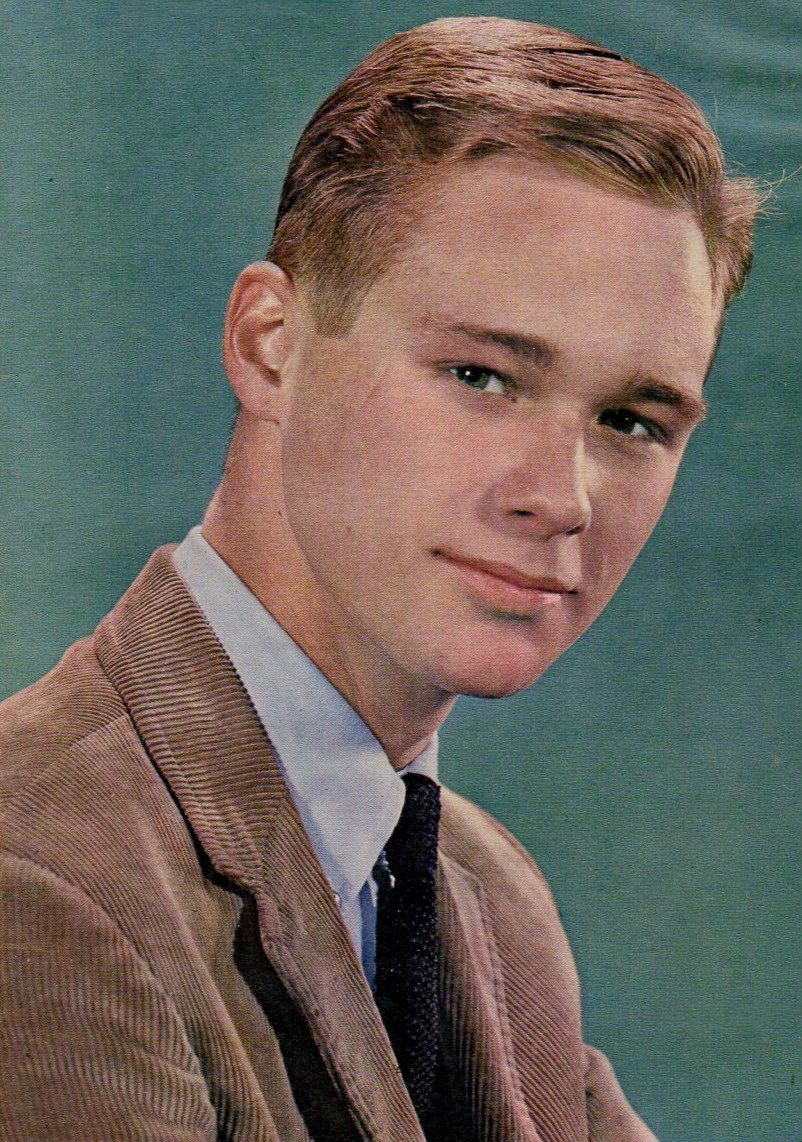 According to Barry Miles' book “Many Years From Now,” the group spent much time at this beach house “whenever they had a day off from filming or if there was time between shoots.” (Documents show that they did not have a single day off during their stay in the Bahamas.) Likely while relaxing in these quarters, Paul took to writing this song while in the company of actor Brandon deWilde. Brandon was a former child actor (appearing in “Shane” in 1953 at eleven years of age) who managed to continue a career into adulthood (starring in “Hud” with Paul Newman in 1963). Being part of the drug scene of the time, it was natural for him to gravitate toward The Beatles who were admittedly quite heavy into marijuana use during the making of their second movie. According to Barry Miles' book “Many Years From Now,” the group spent much time at this beach house “whenever they had a day off from filming or if there was time between shoots.” (Documents show that they did not have a single day off during their stay in the Bahamas.) Likely while relaxing in these quarters, Paul took to writing this song while in the company of actor Brandon deWilde. Brandon was a former child actor (appearing in “Shane” in 1953 at eleven years of age) who managed to continue a career into adulthood (starring in “Hud” with Paul Newman in 1963). Being part of the drug scene of the time, it was natural for him to gravitate toward The Beatles who were admittedly quite heavy into marijuana use during the making of their second movie.
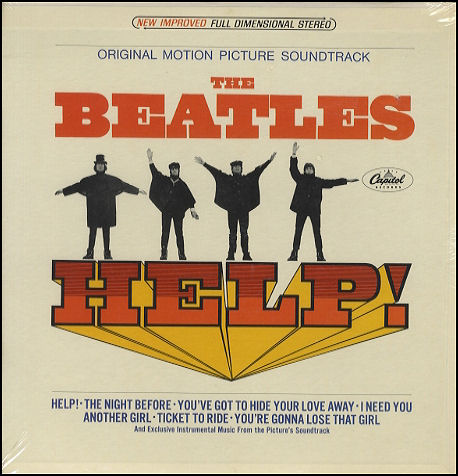 McCartney recalls their association: “He was a nice guy who was fascinated by what we did, a sort of Brat Pack actor. We chatted endlessly, and I seem to remember writing “Wait” in front of him, and him being interested to see it being written.” Knowing they needed to think about writing songs to fill the rest of the upcoming “Help!” soundtrack album once the filming of the movie was completed, this song was no doubt under consideration for filling that quota. McCartney recalls their association: “He was a nice guy who was fascinated by what we did, a sort of Brat Pack actor. We chatted endlessly, and I seem to remember writing “Wait” in front of him, and him being interested to see it being written.” Knowing they needed to think about writing songs to fill the rest of the upcoming “Help!” soundtrack album once the filming of the movie was completed, this song was no doubt under consideration for filling that quota.
 While most writers and commentators throughout the past few decades assume, and even insist, that “Wait” was primarily written by John Lennon, and because its composers mostly declined to refer to the song in interviews, it was somewhat of a bombshell when Paul himself finally spoke up about it in the 1997 book “Many Years From Now.” “I think it was my song. I don’t remember John collaborating too much on it, although he could have.” While most writers and commentators throughout the past few decades assume, and even insist, that “Wait” was primarily written by John Lennon, and because its composers mostly declined to refer to the song in interviews, it was somewhat of a bombshell when Paul himself finally spoke up about it in the 1997 book “Many Years From Now.” “I think it was my song. I don’t remember John collaborating too much on it, although he could have.”
Although John’s voice is first to be heard in the song, this was apparently done in order for Paul to fall into his more comfortable role of singing a higher harmony in the verses and choruses. We also should note that it is Paul who sings by himself whenever no harmonies are present, which occurs during both bridges of the song. The only time John sings solo on this track is to set up the phrases in the verses, such as “It’s been a…” and “I’ve been a…”
 Since it has been determined that “Wait” was primarily, if not entirely, written by McCartney, the lyrics appear to foresee his imminent return to current girlfriend Jane Asher after the filming for their movie "Help!" was complete. While the real-life circumstances fit, this is mere conjecture since Paul has never confirmed as such. Since it has been determined that “Wait” was primarily, if not entirely, written by McCartney, the lyrics appear to foresee his imminent return to current girlfriend Jane Asher after the filming for their movie "Help!" was complete. While the real-life circumstances fit, this is mere conjecture since Paul has never confirmed as such.
Recording History
 The very last day of recording for the British “Help!” album occurred on June 17th, 1965. The Beatles entered EMI Studio Two at 2 pm for the first session of the day that ran until 5:30 pm. This afternoon session resulted in completing Paul’s beautiful song “Yesterday” by adding a brief vocal overdub as well as the stunning string quartet. They also recorded, in its entirety, “Act Naturally” before this session was complete. The very last day of recording for the British “Help!” album occurred on June 17th, 1965. The Beatles entered EMI Studio Two at 2 pm for the first session of the day that ran until 5:30 pm. This afternoon session resulted in completing Paul’s beautiful song “Yesterday” by adding a brief vocal overdub as well as the stunning string quartet. They also recorded, in its entirety, “Act Naturally” before this session was complete.
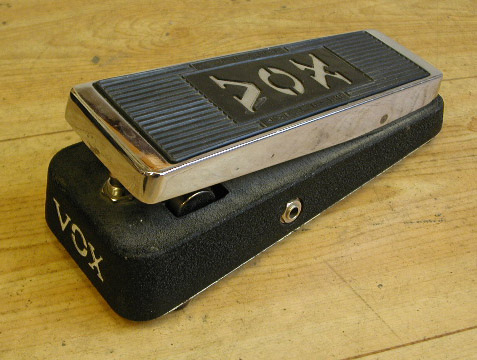 After an hour-and-a-half break, the group re-entered the studio at 7 pm for a scheduled three hour session to record the final song needed for the album, namely “Wait.” After some rehearsal, they performed four takes of the rhythm track, “take four” being deemed best. The rhythm track consisted of John on electric rhythm guitar, George on lead guitar played through his volume pedal (as also used on “I Need You” and “Yes It Is,” both recorded on February 17th of that year), Ringo on drums and Paul on bass. Paul’s bass guitar was recorded on a separate track so that it could be panned separately during the mixing stage if so desired. After an hour-and-a-half break, the group re-entered the studio at 7 pm for a scheduled three hour session to record the final song needed for the album, namely “Wait.” After some rehearsal, they performed four takes of the rhythm track, “take four” being deemed best. The rhythm track consisted of John on electric rhythm guitar, George on lead guitar played through his volume pedal (as also used on “I Need You” and “Yes It Is,” both recorded on February 17th of that year), Ringo on drums and Paul on bass. Paul’s bass guitar was recorded on a separate track so that it could be panned separately during the mixing stage if so desired.
After this was complete, John and Paul overdubbed their vocals, although these were left single-tracked at this time. They then ended the session a half-hour early at 9:30 since they figured the album was complete. The mono mix of “Yesterday” appears to have been made after The Beatles had left for the night.
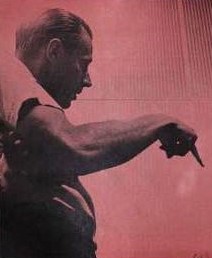 The remaining mixes for the “Help!” album were made the following day on June 18th, 1965 in the control room of EMI Studio Two by producer George Martin and engineers Norman Smith and Phil McDonald. All of the mono mixes were done first and, since “Wait” was considered part of the album, it too received its first mono mix on this day. However, when the stereo mixes of all these songs were done afterward, “Wait” was not one of them. It is quite possible that George Martin didn’t feel the song was good enough to include on the album in this state, hence there was no need to create a stereo mix at this time. And since The Beatles were leaving immediately for a short European Tour, there was no time to bring them back into the recording studio for more work on the song. With a need for a fourteenth song for the album, they looked for another solution. The remaining mixes for the “Help!” album were made the following day on June 18th, 1965 in the control room of EMI Studio Two by producer George Martin and engineers Norman Smith and Phil McDonald. All of the mono mixes were done first and, since “Wait” was considered part of the album, it too received its first mono mix on this day. However, when the stereo mixes of all these songs were done afterward, “Wait” was not one of them. It is quite possible that George Martin didn’t feel the song was good enough to include on the album in this state, hence there was no need to create a stereo mix at this time. And since The Beatles were leaving immediately for a short European Tour, there was no time to bring them back into the recording studio for more work on the song. With a need for a fourteenth song for the album, they looked for another solution.
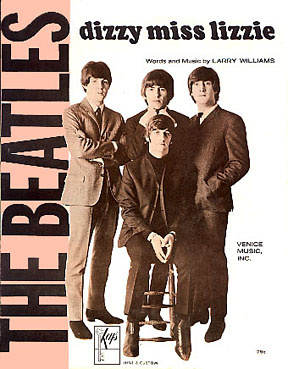 An easy solution was found by including the May 10th recorded Larry Williams rocker “Dizzy Miss Lizzy” instead of “Wait.” Both “Dizzy Miss Lizzy” and “Bad Boy” were recorded solely for the US market but, since there were no immediate plans to release them in Britain, they undoubtedly figured they’d release the better of the two songs to finish off the latest album. Problem solved. An easy solution was found by including the May 10th recorded Larry Williams rocker “Dizzy Miss Lizzy” instead of “Wait.” Both “Dizzy Miss Lizzy” and “Bad Boy” were recorded solely for the US market but, since there were no immediate plans to release them in Britain, they undoubtedly figured they’d release the better of the two songs to finish off the latest album. Problem solved.
Nearly five months later, on November 11th, 1965, The Beatles found themselves in the exact same predicament. The last possible day for recording their next album “Rubber Soul” was upon them and they needed one more song to fill the fourteen track quota. They entered EMI Studio Two on this day at 6 pm for what became a marathon thirteen hour recording session to complete the album. After fully recording two new songs, namely “You Won’t See Me” and “Girl,” they had the original master tape of “Wait” spooled up in order to add overdubs and finally complete the song. This took approximately an hour to do, from 4 to 5 am on what was now November 12th, 1965.
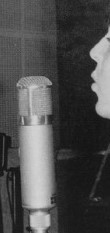 The overdubs performed during this hour included Paul double-tracking his vocals during the bridges and adding a third harmony during the final two verses. George Harrison added additional volume pedal guitar work as well as rhythm guitar during both bridges. Ringo was quite busy, adding both tambourine and maracas which made the song quite percussion heavy. John opted not to double-track his vocals on this song. The overdubs performed during this hour included Paul double-tracking his vocals during the bridges and adding a third harmony during the final two verses. George Harrison added additional volume pedal guitar work as well as rhythm guitar during both bridges. Ringo was quite busy, adding both tambourine and maracas which made the song quite percussion heavy. John opted not to double-track his vocals on this song.
 The final mixing session for the “Rubber Soul” album was on November 15th, 1965 in the control room of EMI Studio One as performed by George Martin, Norman Smith and 2nd engineer Richard Lush. The mono mix of “Wait” made on this day was named “remix 2” because of the early mono mix of the incomplete song made on June 18th, 1965, which has never been released in any form. The final mixing session for the “Rubber Soul” album was on November 15th, 1965 in the control room of EMI Studio One as performed by George Martin, Norman Smith and 2nd engineer Richard Lush. The mono mix of “Wait” made on this day was named “remix 2” because of the early mono mix of the incomplete song made on June 18th, 1965, which has never been released in any form.
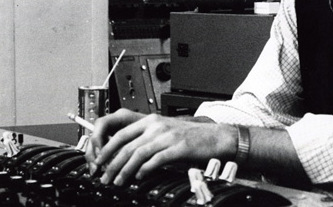 The stereo mix made on this day puts the guitars and drums of the original rhythm track entirely on the left channel while the bass guitar is panned to the center of the mix. All of the vocals, original and new, are heard entirely on the right channel as are all of the overdubs performed on November 12th. Very little if any reverb can be detected in either the mono or stereo mixes made in 1965. The stereo mix made on this day puts the guitars and drums of the original rhythm track entirely on the left channel while the bass guitar is panned to the center of the mix. All of the vocals, original and new, are heard entirely on the right channel as are all of the overdubs performed on November 12th. Very little if any reverb can be detected in either the mono or stereo mixes made in 1965.
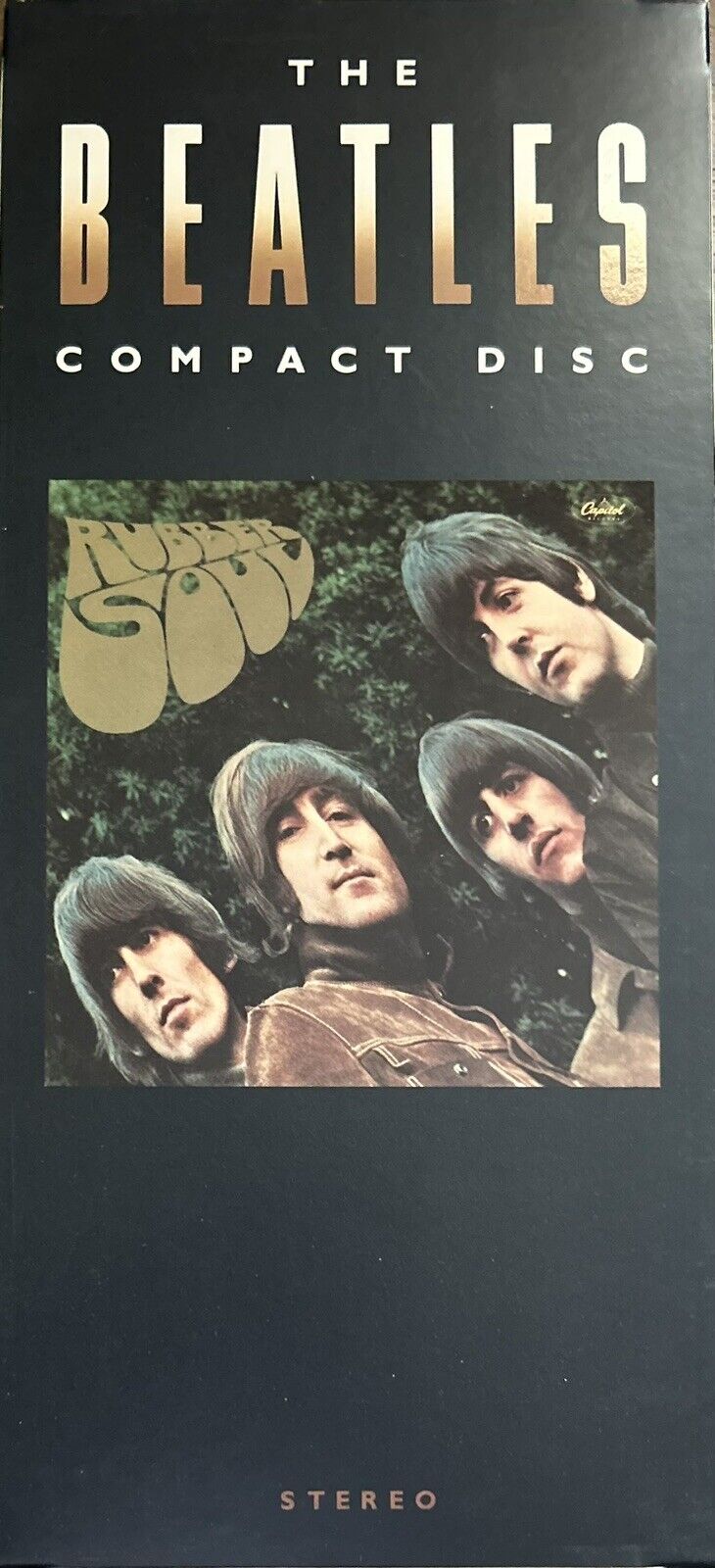 A second stereo mix was made by George Martin in 1986 for use on the compact disc release of “Rubber Soul” in 1987. The only noticeable difference is that the vocals are panned a little more to the center of the mix. Once again, the absence of reverb is noteworthy since it was customary to put in at least a little to add some depth. This may be evidence that the song was considered as “filler” material for the album, even at this late date, or perhaps they thought reverb just wasn't needed here. A second stereo mix was made by George Martin in 1986 for use on the compact disc release of “Rubber Soul” in 1987. The only noticeable difference is that the vocals are panned a little more to the center of the mix. Once again, the absence of reverb is noteworthy since it was customary to put in at least a little to add some depth. This may be evidence that the song was considered as “filler” material for the album, even at this late date, or perhaps they thought reverb just wasn't needed here.
Song Structure and Style
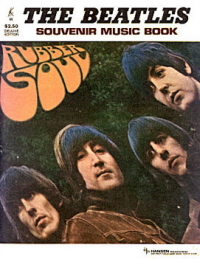 Once again here utilizing a full-fledged chorus, this being something that was becoming a little more common for them by mid 1965, “Wait” falls into a lengthy ‘verse/ chorus/ verse/ chorus/ bridge/ verse/ chorus/ bridge/ verse/ chorus/ verse’ pattern (or ababcabcaba). No introduction or solo is thought to be required, but a somewhat drawn-out conclusion is built around a repeat of the first verse. What is unusual here is the allotted measures that both the verse and chorus contain. Once again here utilizing a full-fledged chorus, this being something that was becoming a little more common for them by mid 1965, “Wait” falls into a lengthy ‘verse/ chorus/ verse/ chorus/ bridge/ verse/ chorus/ bridge/ verse/ chorus/ verse’ pattern (or ababcabcaba). No introduction or solo is thought to be required, but a somewhat drawn-out conclusion is built around a repeat of the first verse. What is unusual here is the allotted measures that both the verse and chorus contain.
 The first verse, which is an unusual six measures long, begins out of thin air with John singing the pick-up line “It’s been a…” a cappella before the downbeat of the first measure actually starts. When the downbeat hits, Paul immediately joins in on a higher harmony and bass guitar along with George’s volume pedal guitar chords and Ringo’s beat on his bass drum and bell of his ride cymbal. Interestingly, all of the elements just detailed are heard primarily on a strict syncopated beat in conjunction with the words “long time, now I’m.” Even though the last of the three phrases adds three more syllables (“coming back home”), all of these elements continue to play the syncopated rhythm. The only ingredient that doesn’t follow this pattern is the overdubbed tambourine which fills the gaps with two accent beats per phrase. The first verse, which is an unusual six measures long, begins out of thin air with John singing the pick-up line “It’s been a…” a cappella before the downbeat of the first measure actually starts. When the downbeat hits, Paul immediately joins in on a higher harmony and bass guitar along with George’s volume pedal guitar chords and Ringo’s beat on his bass drum and bell of his ride cymbal. Interestingly, all of the elements just detailed are heard primarily on a strict syncopated beat in conjunction with the words “long time, now I’m.” Even though the last of the three phrases adds three more syllables (“coming back home”), all of these elements continue to play the syncopated rhythm. The only ingredient that doesn’t follow this pattern is the overdubbed tambourine which fills the gaps with two accent beats per phrase.
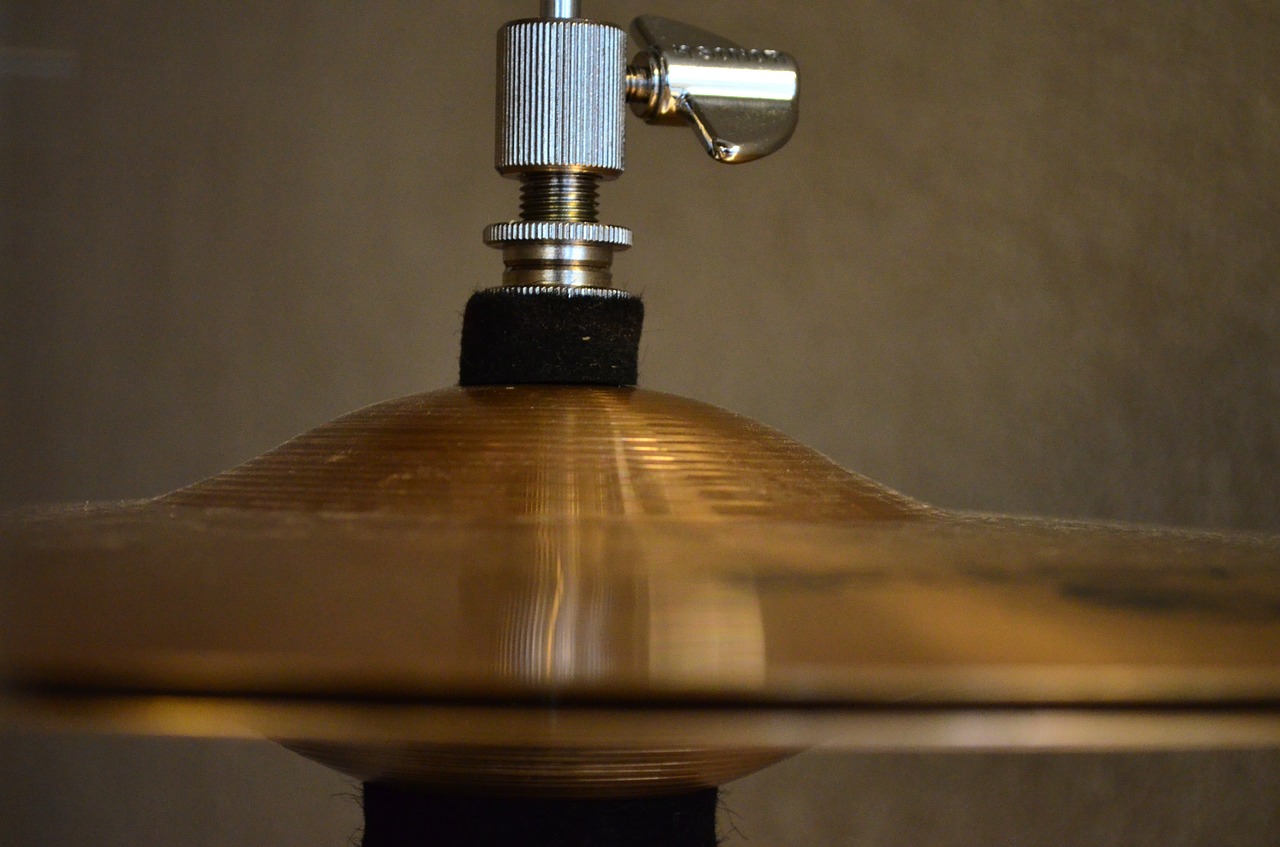 The second half of the first verse is a melodic repeat of the first half but with a couple of differences in the arrangement. Ringo starts playing a regular 4/4 rock beat on the drums with the hi-hat while his overdubbed maracas come in and play a steady 4/4 beat as well. These differences not only steer the arrangement away from monotony, but also infuse a degree of anticipation for a climax which is due to appear in the upcoming chorus. The verse ends with Ringo crashing his open hi hat followed by a tom roll to herald this climax. The second half of the first verse is a melodic repeat of the first half but with a couple of differences in the arrangement. Ringo starts playing a regular 4/4 rock beat on the drums with the hi-hat while his overdubbed maracas come in and play a steady 4/4 beat as well. These differences not only steer the arrangement away from monotony, but also infuse a degree of anticipation for a climax which is due to appear in the upcoming chorus. The verse ends with Ringo crashing his open hi hat followed by a tom roll to herald this climax.
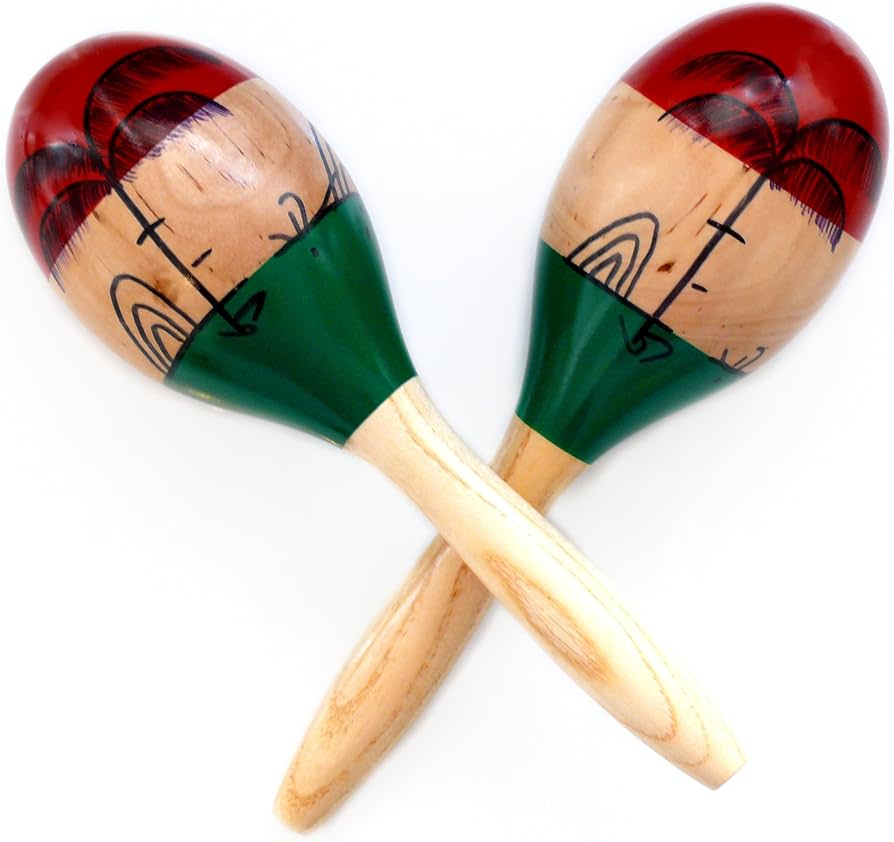 The chorus, which reaches the highest vocal pitch of the entire song (the harmony vocals, that is), is a very unusual five measures long. The overdubbed maracas may disappear, but the tambourine takes its place by playing a steady 4/4 rhythm while Ringo’s drums on the rhythm track move the rock beat from the hi-hat to the ride cymbal. There are actually two Georges playing volume pedal guitar in different patterns during the verse, one from the original rhythm track on the left channel (performed on June 17th, 1965) and another on the right channel (performed on November 12th, 1965). John is first heard on guitar during this verse as well, but only in the left channel as performed on the original rhythm track. The chorus, which reaches the highest vocal pitch of the entire song (the harmony vocals, that is), is a very unusual five measures long. The overdubbed maracas may disappear, but the tambourine takes its place by playing a steady 4/4 rhythm while Ringo’s drums on the rhythm track move the rock beat from the hi-hat to the ride cymbal. There are actually two Georges playing volume pedal guitar in different patterns during the verse, one from the original rhythm track on the left channel (performed on June 17th, 1965) and another on the right channel (performed on November 12th, 1965). John is first heard on guitar during this verse as well, but only in the left channel as performed on the original rhythm track.
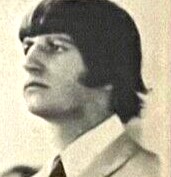 On the fifth and final measure of the chorus, which brings the song back to its original key of F# minor, most of the instruments come to a crashing halt (just after the word “cried”). One instrument that keeps playing, as if Ringo didn’t realize that everyone else stopped, is the overdubbed tambourine. He continues with four more beats to fill the gap of silence before the next verse begins. Obviously this wasn’t a mistake since the same pattern is repeated later in the song. On the fifth and final measure of the chorus, which brings the song back to its original key of F# minor, most of the instruments come to a crashing halt (just after the word “cried”). One instrument that keeps playing, as if Ringo didn’t realize that everyone else stopped, is the overdubbed tambourine. He continues with four more beats to fill the gap of silence before the next verse begins. Obviously this wasn’t a mistake since the same pattern is repeated later in the song.
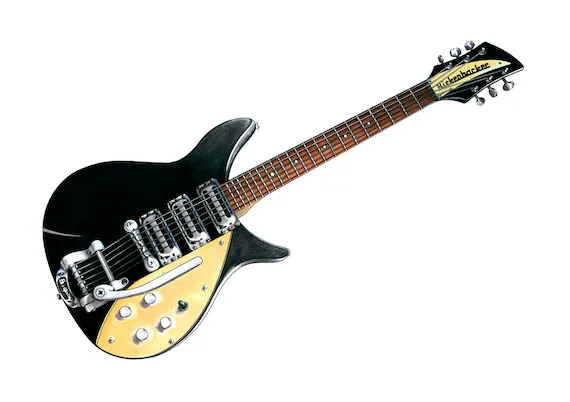 A second verse and chorus are then heard, which repeat the same instrumentation and arrangement, except that all the instruments continue to play during the final measure of the second chorus this time around. After George ends the second chorus with three taps on his volume pedal switch, the first eight measure bridge is heard. Ringo keeps with the rock beat he had been playing during the chorus while Paul sings double-tracked by himself. Both the left and right channels contain rhythm guitar "chunks" played by John (left channel) and George (overdubbed right channel). A second verse and chorus are then heard, which repeat the same instrumentation and arrangement, except that all the instruments continue to play during the final measure of the second chorus this time around. After George ends the second chorus with three taps on his volume pedal switch, the first eight measure bridge is heard. Ringo keeps with the rock beat he had been playing during the chorus while Paul sings double-tracked by himself. Both the left and right channels contain rhythm guitar "chunks" played by John (left channel) and George (overdubbed right channel).
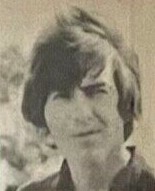 The original rhythm track contains some awkward volume pedal work from George that comes in a little late in the third and fourth measures. Also, the overdubbed tambourine still continues with the same ferocity as heard in the previous chorus. In the eighth measure, however, we see the group put in another "break" on the beat “will wait for me” with the only instrument still heard being George’s volume pedal guitar, which is actually, two of George, one on each channel playing on the same beats. The original rhythm track contains some awkward volume pedal work from George that comes in a little late in the third and fourth measures. Also, the overdubbed tambourine still continues with the same ferocity as heard in the previous chorus. In the eighth measure, however, we see the group put in another "break" on the beat “will wait for me” with the only instrument still heard being George’s volume pedal guitar, which is actually, two of George, one on each channel playing on the same beats.
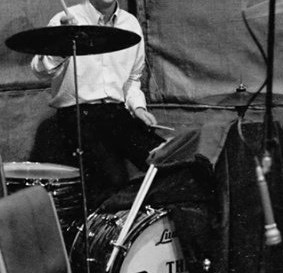 A repeat of the first verse is then heard with the exact same instrumentation as before. The chorus is then repeated with the same ending as heard the second time around. This is followed by a repeat of the bridge, but the instrumentation is made different because of how Ringo played the drums on the rhythm track. He concentrates primarily on the snare drum by playing eighth notes that vary in both volume and intensity throughout the first seven measures. He then stops suddenly in the eighth measure to mimic the arrangement of the first bridge. One wonders whether he inadvertently missed his cue the first time the bridge was played and then remembered the arrangement the second time around. He may have been just learning this arrangement and, as evidenced in early takes of “No Reply” for instance (as heard on “Anthology 1”), he may have not had it down quite right yet and they let it go. Or maybe, it was intentional to add some variation. Just a thought. A repeat of the first verse is then heard with the exact same instrumentation as before. The chorus is then repeated with the same ending as heard the second time around. This is followed by a repeat of the bridge, but the instrumentation is made different because of how Ringo played the drums on the rhythm track. He concentrates primarily on the snare drum by playing eighth notes that vary in both volume and intensity throughout the first seven measures. He then stops suddenly in the eighth measure to mimic the arrangement of the first bridge. One wonders whether he inadvertently missed his cue the first time the bridge was played and then remembered the arrangement the second time around. He may have been just learning this arrangement and, as evidenced in early takes of “No Reply” for instance (as heard on “Anthology 1”), he may have not had it down quite right yet and they let it go. Or maybe, it was intentional to add some variation. Just a thought.
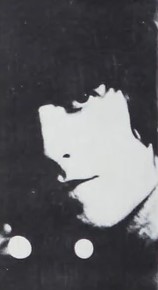 After this, the second verse is repeated with the exact same instrumentation, although George’s volume pedal chord that was to begin the fifth measure comes in noticeably early, actually within the last moments of the fourth measure. An interesting added element here is in the last four measures where Paul overdubs an additional harmony starting on the words “heart’s strong…” The fourth and final chorus is then heard, which ends exactly as the first one did with a break and the tambourine trailing off in the final measure. After this, the second verse is repeated with the exact same instrumentation, although George’s volume pedal chord that was to begin the fifth measure comes in noticeably early, actually within the last moments of the fourth measure. An interesting added element here is in the last four measures where Paul overdubs an additional harmony starting on the words “heart’s strong…” The fourth and final chorus is then heard, which ends exactly as the first one did with a break and the tambourine trailing off in the final measure.
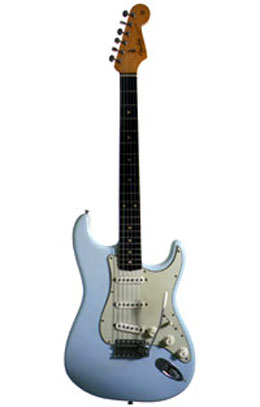 To conclude the song, the first verse is heard for the third time with the first three measures sounding identical in arrangement as heard throughout the song. However, the final three measures are different in many ways. First of all, the fourth and fifth measures show George’s guitar drop out entirely while Paul once again overdubs an additional harmony, this time on the words “…way now, oh how.” The final measure is then dramatically slowed down to emphasize three part harmony on the words “I’ve been alone.” The only elements heard at this point are Ringo’s cymbal tap and one bass note from Paul. The final chord of F# minor is then heard as a rumble on bass guitar along with a subtle drum roll from Ringo and George double-tracking a descending volume pedal riff from both channels of the stereo mix. Add to this the violent shaking of the tambourine and maracas and you experience the ominously mournful conclusion to an otherwise optimistic song. To conclude the song, the first verse is heard for the third time with the first three measures sounding identical in arrangement as heard throughout the song. However, the final three measures are different in many ways. First of all, the fourth and fifth measures show George’s guitar drop out entirely while Paul once again overdubs an additional harmony, this time on the words “…way now, oh how.” The final measure is then dramatically slowed down to emphasize three part harmony on the words “I’ve been alone.” The only elements heard at this point are Ringo’s cymbal tap and one bass note from Paul. The final chord of F# minor is then heard as a rumble on bass guitar along with a subtle drum roll from Ringo and George double-tracking a descending volume pedal riff from both channels of the stereo mix. Add to this the violent shaking of the tambourine and maracas and you experience the ominously mournful conclusion to an otherwise optimistic song.
 Paul ends up being the primary performer on “Wait” as he provides the stunning bass work and is the major vocal contributor, being the natural that he is at picking out and executing harmonies. John does his part at singing lead vocals during the verses as well as providing electric rhythm guitar parts on the rhythm track. George shows that he’s getting more of a knack at working with his volume pedal, although this is apparently the last Beatles track it was used on. Paul ends up being the primary performer on “Wait” as he provides the stunning bass work and is the major vocal contributor, being the natural that he is at picking out and executing harmonies. John does his part at singing lead vocals during the verses as well as providing electric rhythm guitar parts on the rhythm track. George shows that he’s getting more of a knack at working with his volume pedal, although this is apparently the last Beatles track it was used on.
For those who hadn’t noticed, Ringo shines quite well on “Wait.” His intricate changes in pattern, along with his tumbling drum fills that usher in the choruses, reveal his obvious enthusiasm during the original recording session. His overdubbed tambourine and maracas, mixed quite high for the release, make his contribution to the song very noteworthy.
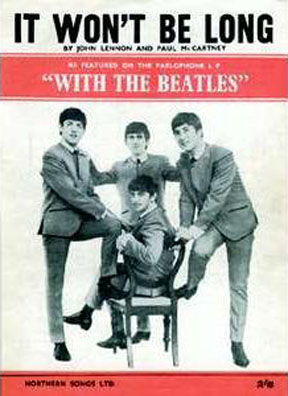 It’s probably the simplistic and innocent message of the lyrics that influences many to think of it being “out of place” on the “Rubber Soul” album. Once fans learn that this song was actually a reject from the “Help!” album that was resurrected only to fill the final track on the new album, the lyrics can then easily be pointed to as evidence of being in the older writing style of Lennon and McCartney. While obviously the case, this song sounding similar in content to “It Won’t Be Long” for example, it must be remembered that “Wait” was written in the same year that all of “Rubber Soul” was. In fact, “Norwegian Wood,” with its very mature theme, began to be written approximately one month before “Wait” was. Either way, the evidence shows the "leaps and bounds" that their writership was taking. It’s probably the simplistic and innocent message of the lyrics that influences many to think of it being “out of place” on the “Rubber Soul” album. Once fans learn that this song was actually a reject from the “Help!” album that was resurrected only to fill the final track on the new album, the lyrics can then easily be pointed to as evidence of being in the older writing style of Lennon and McCartney. While obviously the case, this song sounding similar in content to “It Won’t Be Long” for example, it must be remembered that “Wait” was written in the same year that all of “Rubber Soul” was. In fact, “Norwegian Wood,” with its very mature theme, began to be written approximately one month before “Wait” was. Either way, the evidence shows the "leaps and bounds" that their writership was taking.
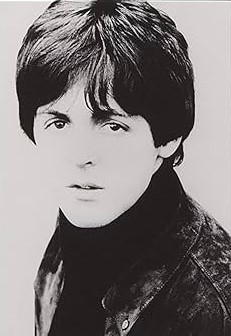 The lyrics tell a simple story of how the singer has “been away” from his girl for “a long time” but now he’s “coming back home.” Though she has wept during his absence, all she needs to do is “wait” until his return, for then they’ll both “forget the tears we cried.” Being faithful is an issue, but the singer comforts her by saying “you ought to know that I’ve been good, as good as I can be.” He then says that he expects the same from her, saying “I’ll trust in you and know that you will wait for me.” A curious inclusion in the lyrics comes in the line “but if your heart breaks, don’t wait, turn me away.” This sounds like the singer is saying that he’ll accept the loss if she decides to find someone new because of his being away too long. He follows this by being hopeful that her “heart’s strong” enough to “hold on” until he gets there. The lyrics tell a simple story of how the singer has “been away” from his girl for “a long time” but now he’s “coming back home.” Though she has wept during his absence, all she needs to do is “wait” until his return, for then they’ll both “forget the tears we cried.” Being faithful is an issue, but the singer comforts her by saying “you ought to know that I’ve been good, as good as I can be.” He then says that he expects the same from her, saying “I’ll trust in you and know that you will wait for me.” A curious inclusion in the lyrics comes in the line “but if your heart breaks, don’t wait, turn me away.” This sounds like the singer is saying that he’ll accept the loss if she decides to find someone new because of his being away too long. He follows this by being hopeful that her “heart’s strong” enough to “hold on” until he gets there.
American Releases
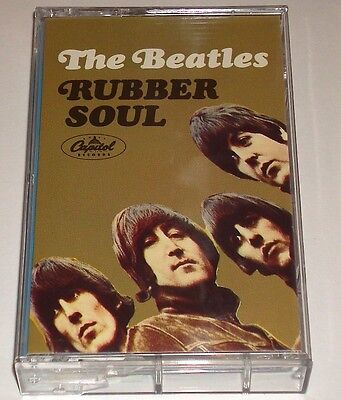 December 6th, 1965 was the release date for the US version of “Rubber Soul” which featured “Wait” as the next-to-last song on side two. With over six million copies sold, America got quite familiar with the song. This US version of "Rubber Soul" was released on an individual compact disc on January 21, 2014, both the mono and stereo versions of the album being contained on a single CD. December 6th, 1965 was the release date for the US version of “Rubber Soul” which featured “Wait” as the next-to-last song on side two. With over six million copies sold, America got quite familiar with the song. This US version of "Rubber Soul" was released on an individual compact disc on January 21, 2014, both the mono and stereo versions of the album being contained on a single CD.
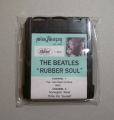 Sometime in 1967, Capitol released Beatles music on a brand new but short-lived format called "Playtapes." These tape cartridges did not have the capability to include entire albums, so two truncated four-song versions of "Rubber Soul" were released in this portable format, "Wait" being on one of these. Beatles "Playtapes" are highly collectable today. Sometime in 1967, Capitol released Beatles music on a brand new but short-lived format called "Playtapes." These tape cartridges did not have the capability to include entire albums, so two truncated four-song versions of "Rubber Soul" were released in this portable format, "Wait" being on one of these. Beatles "Playtapes" are highly collectable today.
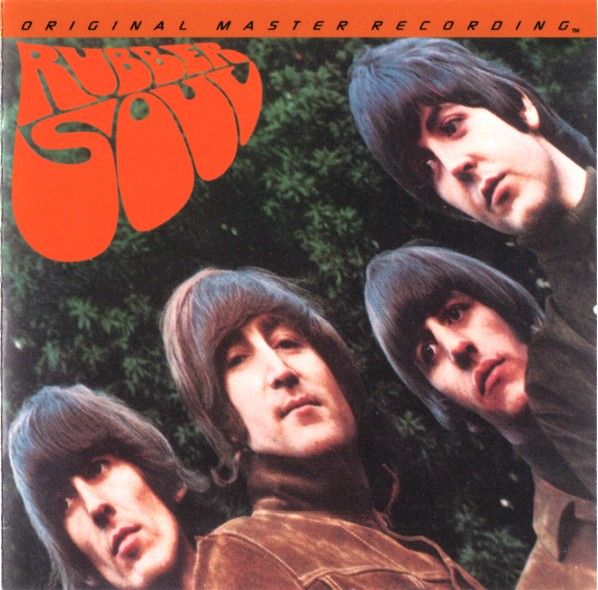 The first time that the original British "Rubber Soul” album was made available in America was the "Original Master Recording" vinyl edition released through Mobile Fidelity Sound Lab in June of 1984. This album, which included the song "Wait," and was prepared utilizing half-speed mastering technology from the original master tape on loan from EMI. This version of the album was only available for a short time and is quite collectible today. The first time that the original British "Rubber Soul” album was made available in America was the "Original Master Recording" vinyl edition released through Mobile Fidelity Sound Lab in June of 1984. This album, which included the song "Wait," and was prepared utilizing half-speed mastering technology from the original master tape on loan from EMI. This version of the album was only available for a short time and is quite collectible today.
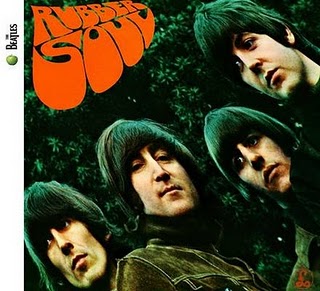 The next time “Wait” was featured on a US release was on April 30th, 1987, when it became available on the first compact disc version of the British “Rubber Soul” album, a vinyl edition being released on July 21st, 1987. The new George Martin 1986 stereo mix was included here, which also appeared on the CD when it was remastered and re-released on September 9th, 2009 and the remastered vinyl edition on November 13th, 2012. The next time “Wait” was featured on a US release was on April 30th, 1987, when it became available on the first compact disc version of the British “Rubber Soul” album, a vinyl edition being released on July 21st, 1987. The new George Martin 1986 stereo mix was included here, which also appeared on the CD when it was remastered and re-released on September 9th, 2009 and the remastered vinyl edition on November 13th, 2012.
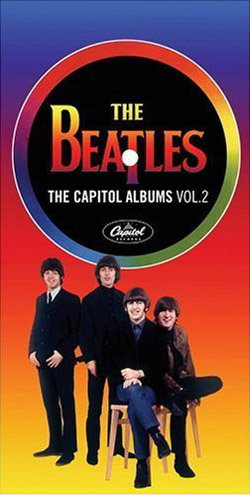 On April 11th, 2006, Capitol released its second box set entitled “The Capitol Albums, Vol. 2,” which contained the entire American “Rubber Soul” album in both stereo and mono. The original 1965 mixes were included, the stereo mix having the complete separation of vocals and overdubs on the right channel and rhythm track on the left channel. On initial pressings of this set, Capitol mistakenly presented a "mono type-B" fold-down mono mix for the entire "Rubber Soul" album, which was a method that combined both the left and right channels of the stereo mix to create a mono mix. Therefore, the mono mix of "Wait" in this set was initially preapred in this way, the error being corrected on subsequent pressings. On April 11th, 2006, Capitol released its second box set entitled “The Capitol Albums, Vol. 2,” which contained the entire American “Rubber Soul” album in both stereo and mono. The original 1965 mixes were included, the stereo mix having the complete separation of vocals and overdubs on the right channel and rhythm track on the left channel. On initial pressings of this set, Capitol mistakenly presented a "mono type-B" fold-down mono mix for the entire "Rubber Soul" album, which was a method that combined both the left and right channels of the stereo mix to create a mono mix. Therefore, the mono mix of "Wait" in this set was initially preapred in this way, the error being corrected on subsequent pressings.
Another release to feature both of these mixes, with the advantage of being remastered, is the box set “The Beatles In Mono,” which came out on CD on September 9th, 2009 and on vinyl on September 9th, 2014.
Live Performances
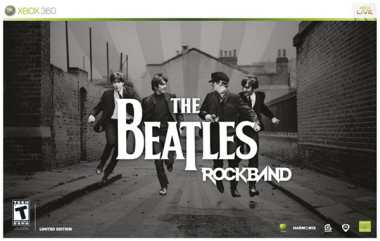 It probably never once entered into The Beatles minds to perform the song “Wait” live, so they never did. But if you desire to fantasize about what it might have been like, “The Beatles Rock Band” game features a simulated Shea Stadium performance of the song. It probably never once entered into The Beatles minds to perform the song “Wait” live, so they never did. But if you desire to fantasize about what it might have been like, “The Beatles Rock Band” game features a simulated Shea Stadium performance of the song.
Conclusion
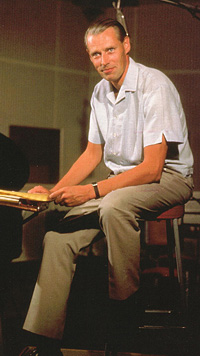 As events transpired, it becomes quite clear that “Wait” has become a more enduring and respected track than it would have had it been released on the British “Help!” album as originally planned. One reason being that it contains more instrumentation and vocals due to the overdubs performed in November of 1965. To help you visualize what it would have sounded like without these additional elements, all you have to do is listen to the left channel by itself on the 1986 stereo mix (on the commercially released remastered CD) and imagine the vocals being somewhat louder. George Martin could maybe have tried to salvage it with added reverb, but we can still see how bland it would have been without Paul’s double-tracked vocals, George’s second volume pedal guitar and Ringo’s percussion. As events transpired, it becomes quite clear that “Wait” has become a more enduring and respected track than it would have had it been released on the British “Help!” album as originally planned. One reason being that it contains more instrumentation and vocals due to the overdubs performed in November of 1965. To help you visualize what it would have sounded like without these additional elements, all you have to do is listen to the left channel by itself on the 1986 stereo mix (on the commercially released remastered CD) and imagine the vocals being somewhat louder. George Martin could maybe have tried to salvage it with added reverb, but we can still see how bland it would have been without Paul’s double-tracked vocals, George’s second volume pedal guitar and Ringo’s percussion.
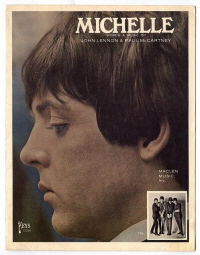 A second reason why “Wait” is deemed of value is that it sits nicely on the “Rubber Soul” album in good company with such honored songs as “Girl,” “Michelle” and “In My Life.” While “Wait” may not make too many "Beatles Best Top 10" lists, it definitely has earned its place in The Beatles cannon and has been thought highly of for many decades since 1965. A second reason why “Wait” is deemed of value is that it sits nicely on the “Rubber Soul” album in good company with such honored songs as “Girl,” “Michelle” and “In My Life.” While “Wait” may not make too many "Beatles Best Top 10" lists, it definitely has earned its place in The Beatles cannon and has been thought highly of for many decades since 1965.
Song Summary
“Wait”
Written by: John Lennon / Paul McCartney
-
Song Written: February/March, 1965
-
Song Recorded: June 17 & November 12, 1965
-
First US Release Date: December 6, 1965
-
-
US Single Release: n/a
-
Highest Chart Position: n/a
-
British Album Release: Parlophone #PCS 3075 “Rubber Soul”
-
Length: 2:13
-
Key: F# minor
-
Producer: George Martin
-
Engineers: Norman Smith, Phil McDonald, Ken Scott
Instrumentation (most likely):
-
Paul McCartney - Lead and Harmony Vocals, Bass Guitar (1963 Hofner 500/1)
-
John Lennon - Lead Vocals, Rhythm Guitar (1964 Rickenbacker 325)
-
George Harrison – Lead and Rhythm Guitar (1961 Sonic Blue Fender Stratocaster)
-
Ringo Starr – Drums (1964 Ludwig Super Classic Black Oyster Pearl), tambourine, maracas
Written and compiled by David Rybaczewski
|
IF YOU WOULD LIKE TO MAKE A DONATION TO KEEP THIS WEBSITE UP AND RUNNING, PLEASE CLICK BELOW!
Sign Up Below for our MONTHLY BEATLES TRIVIA QUIZ!
|